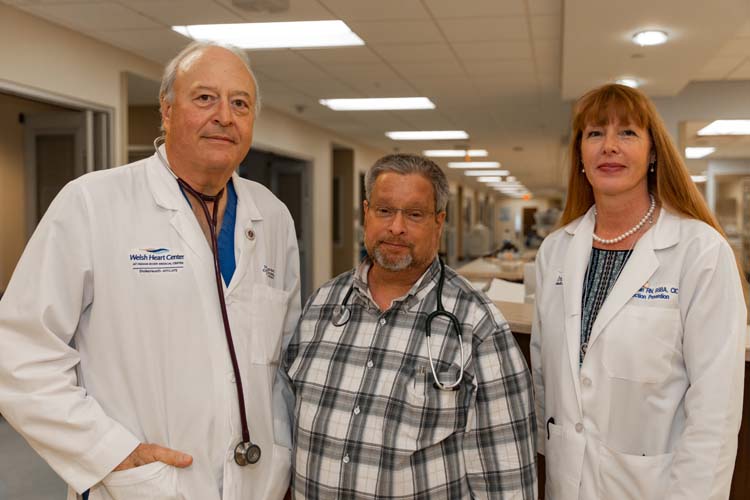
As a nation we’ve grown blasé when it comes to bacteria.
Maybe that’s because we’ve spent years going through store aisles lined with antibacterial everything: soaps, sprays, deodorants, cosmetics, kitchenwares, house paint, clothing, humidifiers, foot warmers and even yoga mats. We think we’re bacteria-proof.
But we’re not.
At Indian River Medical Center, critical care specialist Dr. George Mitchell, infectious disease specialist Dr. Charles Callahan, and registered nurse and Infection preventionist Diane Bain are raising the alarm about an all-too-common water-borne bacterium: Vibrio Vulnificus.
What exactly is this worrisome bug?
You might know it better by its horror movie-like nickname: the “flesh-eating bacteria,” or perhaps as “necrotizing fasciitis.” By any name, it is a potentially lethal bacterium found naturally in salty or brackish water, particularly during the warmer months – a malicious microbe that can and does kill people. Quickly. Especially here in Florida.
As the Centers for Disease Control said in a statement this past July, about a dozen Vibrio species can cause human illness, but Vibrio Vulnificus stands out from the pack. It causes an estimated 80,000 illnesses and 100 deaths in the United States every year.
“Most people with a mild case of vibriosis recover after about 3 days with no lasting effects,” according to the CDC, but “people with a Vibrio Vulnificus infection can get seriously ill and need intensive care or limb amputation.”
The Florida Department of Health says Vibrio Vulnificus infected 346 people here between 2008 and 2017, 99 of whom died.
Generally, a Vibrio Vulnificus infection presents in one of two ways: either it attacks the skin and soft tissue of the body, or the gastrointestinal tract, after contaminated food has been eaten.
As Mitchell puts it, “If you get an infection and you have the skin type of infection and you go longer than 24 hours [without treatment], the mortality rate is 50 percent, but if you go 72 hours, it’s 100 percent.”
It gets worse. Especially for gourmands. Eating uncooked seafood in general and raw oysters in particular is the most common way this particular pathogen finds its way into our system.
Additionally, Mitchell adamantly warns that the risk of infection and death is much higher for very elderly people, those with chronic liver disease, immunocompromised patients who have HIV or are on chemotherapy to treat cancer, people who are on dialysis, and those who have other chronic medical conditions. He flatly states those people should not eat uncooked seafood or wade in the Treasure Coast’s brackish waters, especially between the months of April and October when that water is at its warmest.
Callahan says Vibrio Vulnificus bacteria “can exist in high salt content such as the ocean, but it prefers brackish water.”
Bain joins the conversation by pointing out “the goal here is to increase the awareness in the community that this organism does exist and that there are measures you can take to protect yourself. Those include wearing shoes when you’re walking in the water so you don’t cut yourself on those shells,” because another prime way for Vibrio Vulnificus to enter your bloodstream is when a cut, puncture or open wound is exposed to water the pernicious pathogen calls home.
And while Florida leads the nation in the number of Vibrio cases, as global temperatures continue to climb, the bacteria is expanding its range.
Mitchell reiterates that “patients with liver disease need to be particularly careful, because for some reason that is the one organ that tends to attract this bacteria,” so if you notice any unusual symptoms – especially pain – after downing a plateful of raw oysters or wading in the lagoon, river or ocean, seek medical help as soon as possible.



